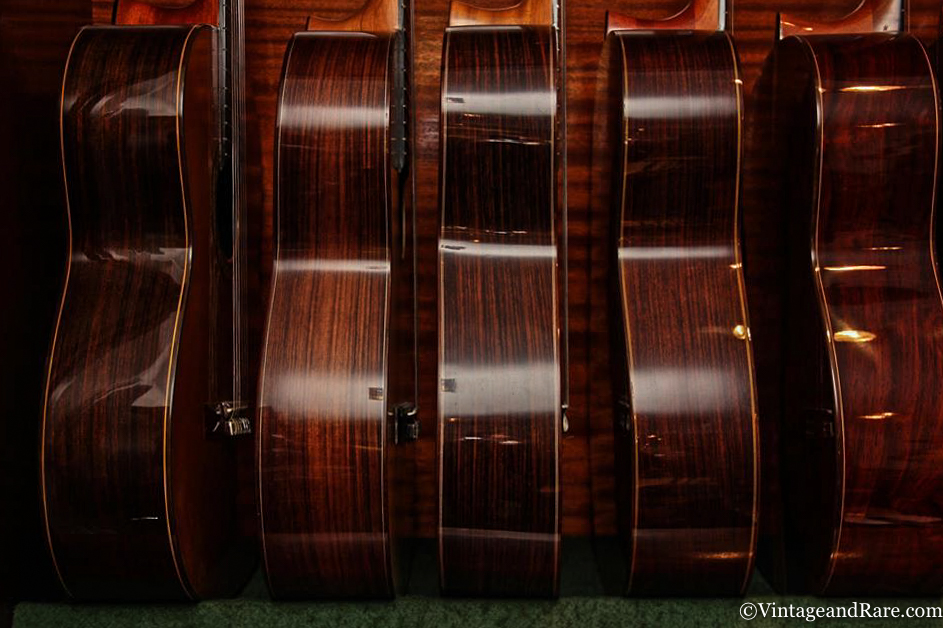CITES TRADE REGULATIONS OVER ROSEWOOD
A lot of people have been asking us about the CITES regulations on Rosewood and certain types of Bubinga, as well as what this means for them, so we decided to write a bit about the subject.
SO… WHAT IS CITES?
CITES stands for Convention on International Trade in Endangered Species of Wild Fauna and Flora, which is essentially a treaty to protect endangered species (plants and animals).
Some people may think this is a bit of a hassle, but it’s pretty simple to understand and it is beneficial for us in order to preserve the planet we live in.

ROSEWOOD AND BUBINGA RESTRICTIONS
From the 24th of September until the 4th of October, CITES held a conference to discuss the preservation of Rosewood and certain types of Bubinga in Johannesburg, South Africa. It was finally agreed that Rosewood and three different species of Bubinga (Guibourtia demeusei, Guibourtia pellegriniana, and Guibourtia tessmannii) will be protected. Since, these regulations have taken effect on the 2nd of January 2017.
WHAT DOES THIS MEAN?
One of the measures is to ensure that builders and manufacturers cannot use Rosewood (and certain species of Bubinga, as mentioned previously) that has been harvested anytime from the 2nd of January 2017. In order to have a control over this, exporters of goods containing Rosewood will have to present a certificate as a proof of the location of where this wood was harvested, as well as the time at which this wood was harvested. Depending on the country of residence certain importers of said goods may also have to present certification to allow these to enter the country. If you are planning on purchasing a guitar containing Rosewood or Bubinga, we advise you to check the requirements of your country to importing before completing a purchase. Usually this is hassle-free.
I’M AN INSTRUMENT BUILDER. HOW DOES THIS AFFECT ME?
You will need apply for certification of your existing stock of these woods, which we assume you have done by now, but if not please do it as soon as possible to avoid any problem when selling your instruments internationally. Besides, if you plan on importing Rosewood or essentially any species of Dalbergia , since the 2nd of January of this year you will need to receive the CITES certification from it’s country of origin.
I’M A DEALER / RESELLER. WHAT DO I NEED TO KNOW?
If you are selling / shipping a guitar containing any of the protected woods within your own country, nothing is required. This only applies to international shipments. Anyhow, if you are shipping internationally, you should be aware of the following:
Any guitar containing any species of Dalbergia shipping internationally, regardles of it’s year of manufacturing will need to be accompanied by a CITES re-export certificate. This applies whether you are a store or a guitar owner planning on shipping a guitar abroad.
I’M GOING TO TRAVEL TO ANOTHER COUNTRY WITH MY GUITAR. DO I NEED A CITES CERTIFICATE FOR THIS?
No, or at least not in most cases. If you are travelling with a guitar that contains 10 kg (22 lbs) or less of these protected woods you do not require a certificate. However, this only applies if you are carrying the instrument for personal use. You may not carry your instrument to an other country in order to sell it without the corresponding CITES certification.
HOW WILL CITES AFFECT THIS MARKET?
Rosewood for example is used on a very large amount of instruments, as most of you know, the most common use of Rosewood is for guitar fretboards, but builders over the years have given it different use for very interesting results successfully. Rosewood fretboards for instance have a warmer tone than maple or other commonly used woods for this purpose, which are usually rather on the snappy side. This characteristic is very desired from a large series of manufacturers in order to obtain a good balance within their instruments. It’s safe to assume the large manufacturers will have very large stocks of these woods for years, but smaller builders may have to find alternatives sooner than later to avoid further costs as well as this being quite time consuming. With such regulations and the rise in popularity of materials such as Richlite or other composites, we might be seeing an interesting development on the guitar manufacturing side.
GET IN TOUCH AND STAY INFORMED!
All in all, this covers the basics about the new CITES regulations, but if you wish to know more about the subject, or need to request a certificate you should get in touch with the authority that manages CITES in your own country. If you do not know who manages CITES in your country, you can click on the following link to find out easily: https://cites.org/eng/cms/index.php/component/cp
Article written by Vincent Baills

